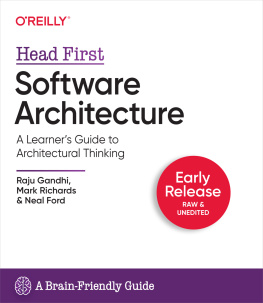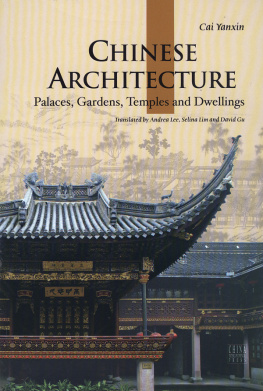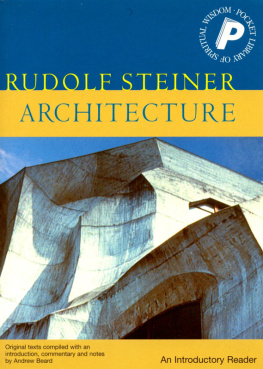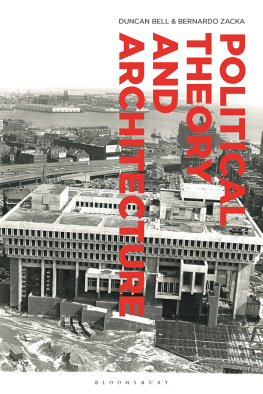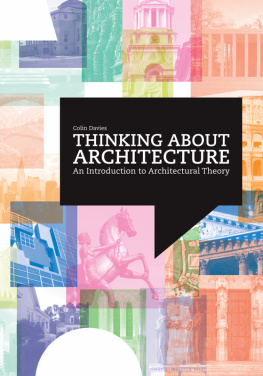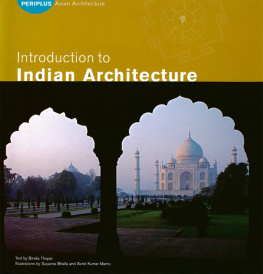BY THE SAME AUTHOR
Masters of the World of Architecture: Pier Luigi Nervi
Classic New York: Georgian Gentility to Greek Elegance
Will They Ever Finish Bruckner Boulevard?
Kicked a Building Lately?
The Tall Building Artistically Reconsidered:
The Search for a Skyscraper Style
Goodbye History, Hello Hamburger:
An Anthology of Architectural Delights and Disasters
Architecture, Anyone? Cautionary Tales of the Building Art
The Unreal America: Architecture and Illusion
Frank Lloyd Wright
ON
ARCHITECTURE

COLLECTED REFLECTIONS ON
A CENTURY OF CHANGE
ADA LOUISE HUXTABLE

Copyright 2008 by Ada Louise Huxtable
All rights reserved. No part of this book may be used or reproduced in any manner
whatsoever without written permission from the publisher except in the case of brief
quotations embodied in critical articles or reviews. For information address
Walker & Company, 175 Fifth Avenue, New York, New York 10010.
Published by Walker Publishing Company, Inc., New York
All papers used by Walker & Company are natural, recyclable products made from
wood grown in well-managed forests. The manufacturing processes conform to the
environmental regulations of the country of origin.
The Tall Building Artistically Reconsidered, reprinted by permission from The Tall BuildingArtistically Reconsidered, (New York: Pantheon Books/Random House, Inc., 1984).
The Way It Never Was reprinted by permission from The Unreal America: Architectureand Illusion, (New York: The New Press, 1997).
Photograph credits:
Corbis: Library of Congress/Prints and Photographs Division: Yale University Department of Art and Architecture: Michele Lee Amundsen The Museum of Modern Art, New York Getty Images:
LIBRARY OF CONGRESS CATALOGING-IN-PUBLICATION DATA HAS BEEN APPLIED FOR.
eISBN: 9780802777607
Visit Walker & Companys Web site at www.walkerbooks.com
First U.S. edition 2008
1 3 5 7 9 10 8 6 4 2
Typeset by Westchester Book Group
Printed in the United States of America by Quebecor World Fairfield
Contents
C RITICS ARE NO MORE CLAIRVOYANT than their fellow mortals. Those of us who write for newspapers have little time to consider the long term or the larger implications of our work, nor are editors known for welcoming such digressions. We are focused on the moment, looking for the next big thing; it is the immediate news peg or upcoming trend that matters. Sometimes we are so busy fighting a defensive rearguard action for an old revolution that we miss the signals of a new one. This has been particularly true for the champions of modernism, a crusade that never seemed to end even as the ground shifted radically under its practitioners feet.
Pressing deadlines, we are not given to abstractions, but this does not mean that we are without passionately held convictions or a personal point of view. I was once asked by a distinguished French journalist, Just what polemical position do you write from, Madame? and when I failed to produce an appropriate polemic and replied that I wrote from crisis to crisis it was clear that I had failed to measure up to his expectations. I could have said that I wrote from a sense of entitlement, in the belief that everyone deserves, and has a right to, standards of quality, humanity, and yes, even art, because art elevates the experience and pleasure of the places where we live and work. As critics, we do our best to explain and uphold those standards and to hold faulty feet to the fire. As journalists, we report the news, which runs the risk of instant obsolescence.
As I sorted through hundreds of columns and articles in the NewYork Times, the Wall Street Journal, and the New York Review of Books to choose what appears in this book, a picture emerged that was much more gratifying, I confess, than I had hoped for or expected. With the hindsight of the twenty-first century, I began to notice a pattern that told the story of an extraordinary evolution of architecture and culture in the five decades of the twentieth century that I have been privileged to witness and record. What could have been an exercise in nostalgia turned out to be an exercise in discovery. I was writing at a historic moment, observing an amazing century of change, documenting an architectural revolution, watching a remarkable scenario unfold. Looking back, it seems that I had been looking forward all the time.
The theme that runs through all of this writing is the transformation of the modernism that pervaded every intellectual and cultural aspect of the twentieth century into a new way of thinking and building. Inevitably, the topicality and immediacy of many of these pieces has faded. Some hot-button issues no longer have the urgency of their original publication. Do-or-die controversies dissolved over the decades. A recent online response to an architecture blog, signed Harry, gave a shocking Philip Johnson building that was the buzz of the 1970s its ultimate putdown and place in history: Remember when the AT&T now Sony Chippendale tower was a scandal? Ho-hum.
I have included items never reprinted before because it is clear to me now that they are part of the larger story. Many more familiar columns were not chosen, but subjects that still seem like landmarks, or milestones, or express enduring values, have been retained. Some endure in spite of me, and for all the wrong reasons. My reservations about the architectural worth of Edward Durell Stones 2 Columbus Circle in New York, built by Huntington Hartford in 1964 as his Gallery of Modern Art, and the case I made for its conversion by the Museum of Arts and Design after a long period of deterioration and neglect, have been blown off by preservationists in full nostalgic cry for the impossible and unreasonable. The name lollipop building, from my original description of it as a little die-cut Venetian palazzo on lollipops, has stuck, even if my arguments havent, and may prove to be my only claim to immortality. As a case history, however, it is a perfect example of how wrong the preservation movement is going today in its evaluation of the buildings of the recent past.
I felt that it was important for every piece in this book to appear as originally published, without the layers of interpretation or reevaluation that subsequent decades have added. Nothing has been changed, edited, or updated, because the issues can only be understood in their original context. There are some obvious omissions. I have not devoted space to preservation, although I was an active participant in that hard-fought battle, because its success is a matter of record and I do not need to repeat the well-known achievements that have established it firmly in our cities and our lives. Admittedly, the war is never won, and we are faced today with a new crisis: a modernist heritage that is under threat, without the scholarship or the standards that are needed to resolve it. Nor have I included anything on sustainable or green architecture, because I believe that building for climatic and human needs should be a given, intrinsic to any design utilizing the remarkable technology that has revolutionized construction today. The literature is overwhelming; it needs no cheering section here.



